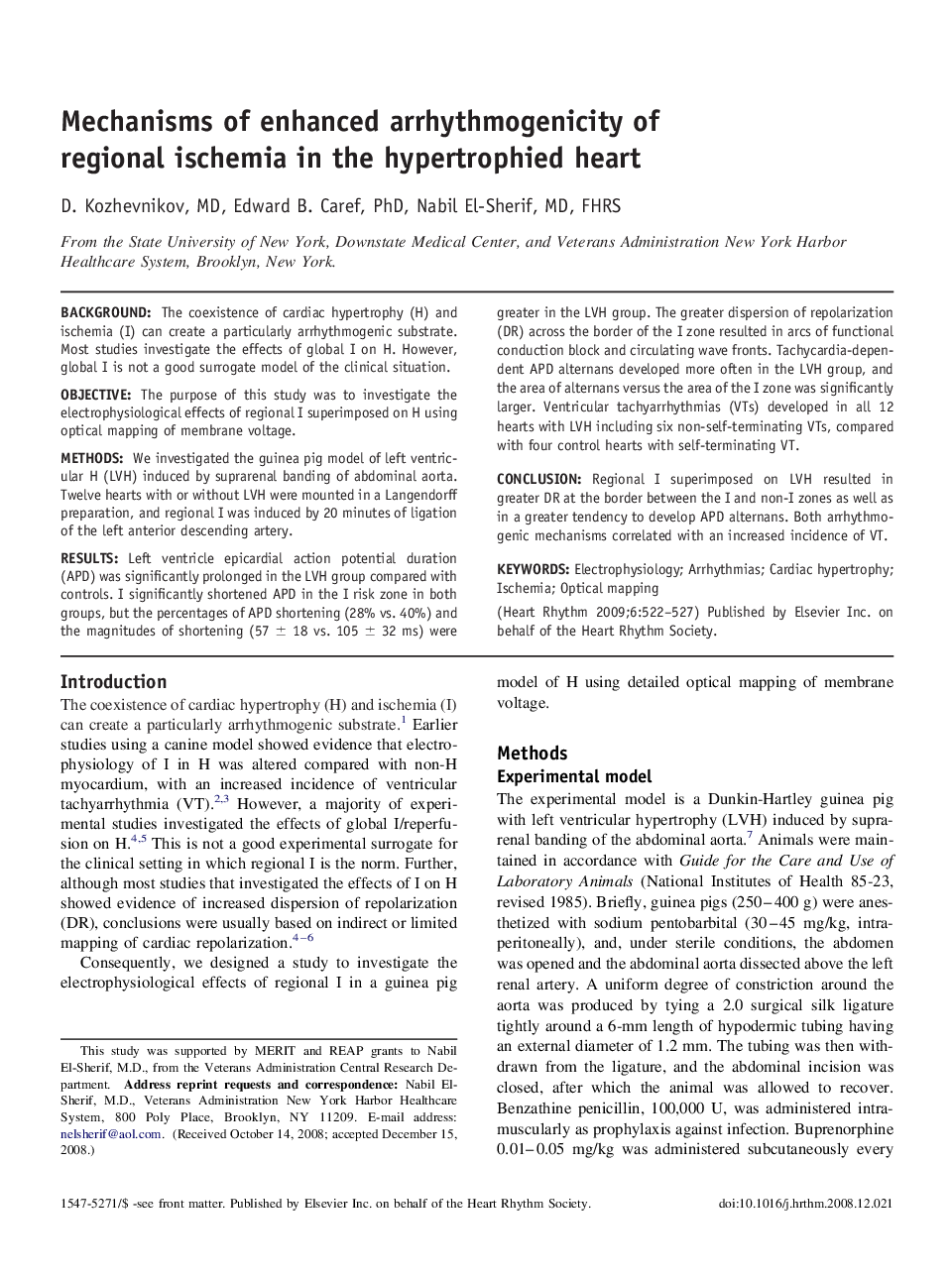| Article ID | Journal | Published Year | Pages | File Type |
|---|---|---|---|---|
| 2925032 | Heart Rhythm | 2009 | 6 Pages |
BackgroundThe coexistence of cardiac hypertrophy (H) and ischemia (I) can create a particularly arrhythmogenic substrate. Most studies investigate the effects of global I on H. However, global I is not a good surrogate model of the clinical situation.ObjectiveThe purpose of this study was to investigate the electrophysiological effects of regional I superimposed on H using optical mapping of membrane voltage.MethodsWe investigated the guinea pig model of left ventricular H (LVH) induced by suprarenal banding of abdominal aorta. Twelve hearts with or without LVH were mounted in a Langendorff preparation, and regional I was induced by 20 minutes of ligation of the left anterior descending artery.ResultsLeft ventricle epicardial action potential duration (APD) was significantly prolonged in the LVH group compared with controls. I significantly shortened APD in the I risk zone in both groups, but the percentages of APD shortening (28% vs. 40%) and the magnitudes of shortening (57 ± 18 vs. 105 ± 32 ms) were greater in the LVH group. The greater dispersion of repolarization (DR) across the border of the I zone resulted in arcs of functional conduction block and circulating wave fronts. Tachycardia-dependent APD alternans developed more often in the LVH group, and the area of alternans versus the area of the I zone was significantly larger. Ventricular tachyarrhythmias (VTs) developed in all 12 hearts with LVH including six non-self-terminating VTs, compared with four control hearts with self-terminating VT.ConclusionRegional I superimposed on LVH resulted in greater DR at the border between the I and non-I zones as well as in a greater tendency to develop APD alternans. Both arrhythmogenic mechanisms correlated with an increased incidence of VT.
